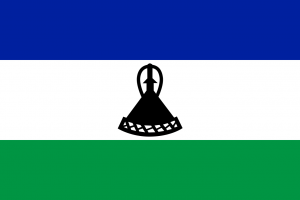Difference between revisions of "Language/Southern-sotho/Grammar/Describing-Nouns"
m (Quick edit) |
m (Quick edit) |
||
| Line 1: | Line 1: | ||
<span pgnav> | |||
{| class="wikitable pg_template_nav" | |||
|[[Language/Southern-sotho/Vocabulary/Hobbies-and-Interests|◀️ Hobbies and Interests — Previous Lesson]] | |||
|[[Language/Southern-sotho/Grammar/Describing-Verbs|Next Lesson — Describing Verbs ▶️]] | |||
|} | |||
</span> | |||
{{Southern-sotho-Page-Top}} | {{Southern-sotho-Page-Top}} | ||
| Line 153: | Line 160: | ||
{{Southern-sotho-Page-Bottom}} | {{Southern-sotho-Page-Bottom}} | ||
<span pgnav> | |||
{| class="wikitable pg_template_nav" | |||
|[[Language/Southern-sotho/Vocabulary/Hobbies-and-Interests|◀️ Hobbies and Interests — Previous Lesson]] | |||
|[[Language/Southern-sotho/Grammar/Describing-Verbs|Next Lesson — Describing Verbs ▶️]] | |||
|} | |||
</span> | |||
Revision as of 22:46, 2 April 2023
| ◀️ Hobbies and Interests — Previous Lesson | Next Lesson — Describing Verbs ▶️ |
Introduction
Welcome to our Southern Sotho course! In this lesson, we will learn about adjectives and how to use them to describe nouns. Adjectives are important building blocks in any language, as they let us add detail and precision to our speech. By the end of this lesson, you will be able to use adjectives to describe nouns of different types in Southern Sotho, and you will have a good understanding of how they work with the noun classes we introduced in a previous lesson.
Adjectives in Southern Sotho
Adjectives in Southern Sotho are words that describe or modify a noun. They can be used to add information about the quality, size, color, shape, or any other characteristic of a person, a place, or an object. For example:
- Setšo sa bana se khutšo. (The children’s dress is beautiful.)
- Ntjapedi e sa tle. (The shoe is not nice.)
- Bana ba hao ba le fifing. (My children are tall.)
- Manana o motle. (The woman is pretty.)
In these examples, khutšo, tle, and fifing are adjectives. Adjectives in Southern Sotho come before the noun they modify, and they agree with the noun in class and number. This means that an adjective will change its prefix and suffix depending on the noun it describes. We will talk more about this in the next section.
Agreement with Nouns
As we have seen before, Southern Sotho nouns are classified into different noun classes, each Class has its own prefix. To use adjectives correctly in Southern Sotho, you need to make sure that they agree with the noun they describe in class and number.
The basic rule is that an adjective will take a prefix that matches the prefix of the noun class it describes. If the noun has a plural form, the suffix of the adjective will change to match it. Some examples are:
<thead> </thead> <tbody> </tbody>| Southern Sotho | Pronunciation | English |
|---|---|---|
| ntjapedi e motle | ɲʈjàpédi ɛ mòtɬɛ | a beautiful shoe |
| lefu le lele | ɬèfù lè lèlè | a dead ditch |
| bana ba bomme ba ba tsoang | bàna bà bòmmɛ bà bà tsɔ̀ŋ | the older children |
| manyalo a magolo a mabapi | maɲàlɔ ɑ màgòlò ɑ màbápì | big traditions of mabapi people |
From these examples, you can notice that the adjective motle takes the infix a- to agree with the noun class ntjapedi, which belongs to class 9. Also, the noun bana belongs to noun class 2, and the adjective tsoang takes the prefix ba- to match the class and the suffix -a to agree with the noun in the plural form.
Comparative and Superlative Forms
In Southern Sotho, we can transform adjectives to make comparative and superlative forms. This is important when we want to make comparisons or express degrees of intensity. To make the comparative form of an adjective, we can add the suffix -eng. To make the superlative form, we add the suffix -eng ka. Some examples are:
<thead> </thead> <tbody> </tbody>| Southern Sotho | Pronunciation | English |
|---|---|---|
| ntjapedi e motle | ɲʈjàpédi ɛ mòtɬɛ | a beautiful shoe |
| ntjapedi e motleng | ɲʈjàpédi ɛ mòtlɛȵ | a more beautiful shoe |
| ntjapedi e motleng ka | ɲʈjàpédi ɛ mòtlɛȵ kà | the most beautiful shoe |
| baeti ba neng ba fetang | bàèti bà nɛ̀ŋ bà fɛ̀tàŋ | younger sisters |
| baeti ba fetang ba fetang ka | bàèti bà fɛ̀tàŋ bà fɛ̀tàŋ kà | the youngest sisters |
In these examples, motleng and baeti ba neng ba fetang are the comparative forms of motle and fetang, respectively. The superlative forms are motleng ka and fetang ka. Notice that the prefix remains the same, and we only add the suffix to make the comparative or the superlative form.
Practice
Let's practice using some adjectives with nouns of different classes. For each noun, write an adjective that agrees in class and number with it. Write both the singular and the plural form.
- Noun class 1: mosali (woman)
- Noun class 5: boraro (mountain)
- Noun class 6: noka (canoe)
- Noun class 8: sefate (hat)
- Noun class 9: ntjapedi (shoe)
Conclusion
In this lesson, we have learned how to use adjectives to describe nouns in Southern Sotho. We have seen that adjectives need to agree in class and number with the nouns they describe, and we have learned how to form the comparative and the superlative forms of adjectives. Adjectives are essential in any language, and we will keep using them throughout this course to be able to communicate accurately and effectively in Southern Sotho. Good job, and keep practicing!
Other Lessons
- 0 to A1 Course
- How to Use Be
- Conditional Mood
- Asking Questions
- Basic Sentence Structure
- Adjectives
- Present Tense
- Noun Classes
- Questions
- Plurals
| ◀️ Hobbies and Interests — Previous Lesson | Next Lesson — Describing Verbs ▶️ |
